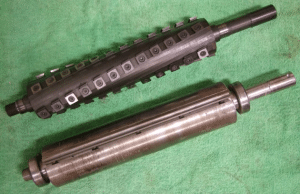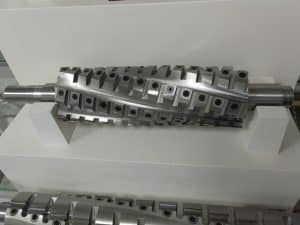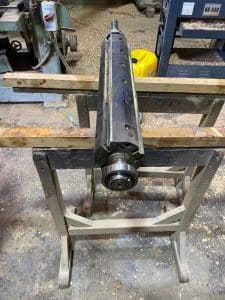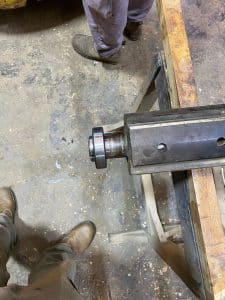시대가 발전함에 따라, 과학기술도 계속해서 발전하고 있어요. 목공 기계 산업에서, 나선형 커터 헤드는 점차 전통적인 직선형 커터 헤드를 대체하고 있습니다.. 예를 들어, 유럽과 미국에서, 나선형 커터 헤드는 목공 기계에서 가장 인기 있는 것이 되었습니다..
But this does not mean that all sawmills are suitable for using spiral cutter heads. Understanding spiral cutter heads versus traditional straight-edge cutter heads will help you better determine which tool is best for your project.
If so, you may be wondering what the difference is between a spiral cutterhead and a straight-edge cutterhead, and which one you should choose for your project. 이 기사에서는, we’ll help you decide by looking at some of the details that make them special.
WHAT IS STRAIGHT CUTTER HEAD?
Simply put, a fixed-blade cutterhead consists of two or more blades (often called cutters) spaced apart on a rotating steel head. A spiral cutterhead, 반면에, consists of small square cutters that are tightly arranged in a spiral pattern on a rotating steel head. Both straight blades and spiral cutters remove surface wood as the board passes through the rotating head.
Straight edge knives have been used on DIY machines for a long time, but as the machinery industry develops, spiral knives are becoming more and more popular, and more and more manufacturers are beginning to offer blades and spiral cutterheads.

WHAT IS THE REASON FOR THE POPULARITY OF SPIRAL CUTTER HEAD?
One of the reasons for the popularity of helical mills is that you don’t have to replace them as often as the blades, so they last longer. 예를 들어, when a blade becomes chipped, you have to replace the entire blade. 하지만, if the milling cutter blade is scored, only the scored blade needs to be replaced, not the undamaged blade.
동시에, the spiral cutter head has a smaller cutting contact area than the flat cutter head, which means it has less cutting resistance and friction. Spiral cutter heads generate less heat and noise than flat cutters due to low resistance and friction. What’s more, the blades mounted on the spiral cutter head have a longer service life.
추가적으로, the smaller recessed blades on auger cutters work in smaller sections to remove large amounts of surface wood. This produces a smoother wood surface than a straight blade cutter, reducing the need for additional sanding or finishing. Smaller cutting widths also produce smaller wood chips, reducing the likelihood of clogging the dust collection system.
It is worth noting that the unique design of the helical milling cutter allows the embedded alloy blade to contact the wood at different intervals. This reduces the burden on the motor, extends motor life and reduces energy consumption.
CONCLUSION
So, does this mean that helical milling cutters are better than straight edge milling cutters?
Not necessarily, and while a true spiral cutter has some maintenance and operating advantages, you can’t ignore the price advantage of a straight edge cutter. Moreover, the spiral cutter head has certain requirements on the speed of the cutting machine, 즉, a machine with a suitable speed is needed to better use the spiral cutter head.
With these points in mind, a straight edge mill may be the perfect solution for a novice woodworker or someone on a budget.



